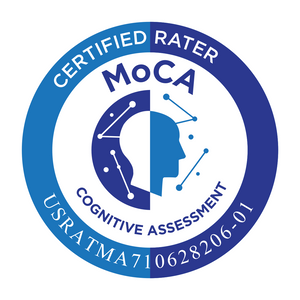Laboratory of Neurotoxicology

The Laboratory of Neurotoxicology under the direction of Dr. Marcia Ratner is focused on understanding how exposures to neurotoxicants encountered in the workplace and environment alter purposeful movement and cognitive function. The overarching goal of the laboratory is to elucidate the mechanisms via which neurotoxicant exposures contribute to the subclinical progression and onset of age-related neurodegenerative diseases such as Alzheimer’s disease (AD), Parkinson’s disease (PD), Dementia with Lewy bodies (DLB), and Amyotrophic Lateral Sclerosis (ALS). The laboratory is exploring these interactions in both sporadic and heritable forms of these neurodegenerative diseases. The role of neurotoxicant exposures in monozygotic twins discordant for age at disease onset is an additional area of interest to the laboratory (Ratner et al, 2022; Friedman et al., 2005). The laboratory also works to identify the specific clinical features and biological markers that effectively differentiate neurotoxic effects from those due to idiopathic neurological and neuropsychiatric disease (Ratner and Jabre, 2016; Ratner and Fitzgerald, 2017; Rutchik and Ratner, 2018; Rutchik and Ratner, 2022; Ratner and Rutchik, 2024). The laboratory is engaged in clinical and preclinical investigations of these interactions. Specific neurotoxicants of interest to the laboratory include metals such as copper, manganese and mercury, pesticides, solvent mixtures and specific industrial solvents such as toluene, and neurotoxic gases such as carbon monoxide.
The laboratory also employs an interdisciplinary clinical behavioral neuroscience approach to these investigations. This approach, combines conventional neuroimaging findings and established measures of cognitive and neurological function with cutting edge biological markers of neurological disease such as neurofilament light chain and brain-derived α-synuclein containing exosomes and phosphorylated α-synuclein. It is expected that this research will serve to advance and expand the use of novel clinical biomarkers of neuronal injury due to neurodegenerative disease and neurotoxicity. The ultimate goals of this translational research are to improve our understanding of the complex relationships between endogenous and exogenous neurotoxic molecules, genetic risk factors, and immune system dysregulation which can act in additive and synergistic ways to modify neurodegenerative disease onset and progression.
The laboratory is conducting preclinical research in collaboration with other investigators to advance and translate our understanding of how neuropathological processes implicated in neurodegenerative diseases such as Alzheimer’s can modify dose-dependent functional responses of conserved neural circuitry following systemic administration of exogenous substances including novel therapeutics under investigation for use in humans. These goals are effectively achieved by using cutting edge technologies such as in vivo electrophysiology to objectively measure, characterize, and quantify dose-dependent changes in functional neurobiological markers of memory such as shape wave ripples and other aspects of neurological function. These biomarkers of neurological function can be correlated with biomarkers of disease neuropathology found in the blood such as Aβ42 and Aβ40 to gain additional insight into these relationships. The laboratory is also collaborating with other laboratories to understand the genetic changes associated with altered neural network responses to investigational drugs which may in turn predict potential vulnerabilities to adverse effects of neurotoxicants in subjects at risk for developing neurodegenerative diseases. It is anticipated that these preclinical investigations which, are performed using powerful within subject experimental designs to interrogate the functional integrity of conserved neural circuitry in transgenic and wild-type animal models, will lead to the development of safer and more effective therapeutics for these neurodegenerative diseases. It is also expected that this preclinical research will substantially advance our understanding of the interactions between heritable genetic predispositions and modifiable environmental risk factors which can be altered to effectively delay the onset and reduce lifetime risk for developing neurodegenerative diseases in sensitive human populations.
You can learn more about our research here.




